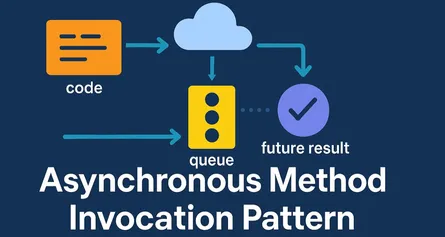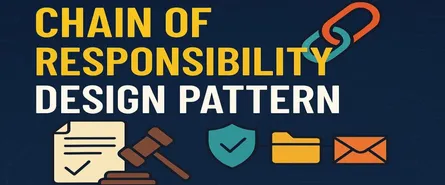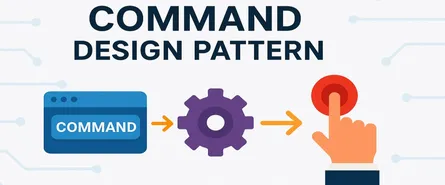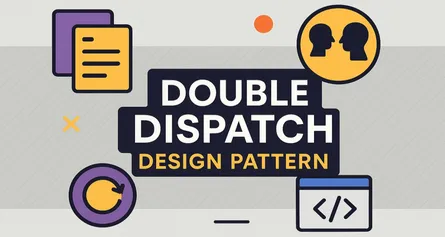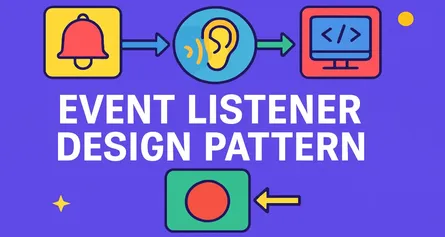
Mastering the Balking Design Pattern: A Practical Guide for Software Architects
Ever had that feeling when you enter a coffee shop, see a long line, and immediately turn around because it’s just not worth the wait? Well, software can behave similarly—sometimes it makes sense for a system to decide not to perform an action because conditions aren’t quite right. That’s precisely what the Balking Design Pattern is all about.
In this guide, we’ll explore the balking pattern in-depth, providing clear explanations, practical insights, and relatable examples—especially for those of you working in C#. By the end, you’ll not only understand when and how to use it but you’ll also know precisely how to implement it effectively in your next software project.
What Exactly is the Balking Design Pattern?
Imagine you’re building a large-scale enterprise application, perhaps an inventory management system or a financial trading platform. In these scenarios, certain actions only make sense under specific conditions. The balking pattern is a behavioral design pattern that gracefully skips (or “balks” at) actions if certain preconditions aren’t met.
In other words, it’s like checking the weather before going on a hike. If it’s pouring rain, you’d probably “balk” at the idea of hiking that day. Similarly, your software can be smart enough to skip actions that aren’t appropriate given the current state of the system.
Historical Context and Origin
The term “balking” first appeared prominently in Doug Lea’s influential book, Concurrent Programming in Java, published in the late 1990s. Although Lea wrote primarily for Java, the core principles he outlined apply to virtually any object-oriented programming language—including C#.
Initially, the balking pattern emerged from the need to handle concurrency more elegantly. Software architects discovered that sometimes it’s wiser to skip an operation entirely than to queue it up and wait for favorable conditions.
Position within Behavioral Design Patterns
The balking pattern belongs to the family of behavioral design patterns. Behavioral patterns deal with the responsibilities of objects and their interactions. They simplify complex control flows, especially in concurrent systems.
Think of behavioral patterns like traffic lights at a busy intersection. They dictate when objects should proceed, pause, or stop, making sure everything moves safely and efficiently. Balking specifically allows objects to pause and assess the situation—deciding if proceeding even makes sense.
Core Principles of the Balking Pattern
Let’s drill down into the key ideas behind balking, giving you a firm grasp on why and how it works:
-
Conditional Execution
Actions are only executed when certain conditions hold true. If not, the system gracefully exits, avoiding unnecessary or potentially harmful work. -
State Awareness
Objects maintain internal state information. They check their own state before deciding if executing an action makes sense. -
Graceful Skipping
Rather than throwing exceptions or errors, balking intentionally and cleanly skips operations when conditions aren’t met. It’s deliberate—like avoiding driving through a flooded road.
Key Components of Balking
Balking is relatively straightforward, consisting of just a few main components:
- Conditional Check: This is a simple condition to verify whether the action should proceed.
- Guard Clause: Code structures (often if-statements) that enable early exits from methods.
- State Management: Mechanisms to monitor and update the state of objects to determine eligibility for action.
Let’s illustrate with a quick example in C#:
Example: File Saving with Balking Pattern
Imagine a scenario where you’re developing a simple text editor. To avoid unnecessary saving operations, your editor should only save when changes are actually made.
public class Document
{
private bool _changed = false;
private readonly object _lock = new object();
public void Edit(string newContent)
{
lock (_lock)
{
Content = newContent;
_changed = true;
}
}
public string Content { get; private set; }
public void Save()
{
lock (_lock)
{
if (!_changed)
{
Console.WriteLine("No changes detected—balking save operation.");
return; // Guard clause (balking here)
}
// Proceed with save
Console.WriteLine("Saving document...");
_changed = false; // Reset the changed state after save
}
}
}In this simple yet powerful example, the document only saves if it’s actually changed. Otherwise, it gracefully balks, preventing unnecessary writes to disk.
When Should You Use the Balking Pattern?
The balking pattern isn’t a universal hammer—it’s more like a specialized tool you bring out when conditions are just right. Here’s when it’s most effective:
Appropriate Scenarios
- Concurrency Management: In multithreaded scenarios, balking helps prevent unnecessary blocking or delays.
- Resource-Intensive Tasks: Tasks that consume significant resources, like database calls, disk operations, or API requests, benefit from balking to avoid redundant actions.
- Conditional Operations: Actions that only make sense under specific system states—like file saving only after edits or logging when meaningful events occur.
Practical Business Cases
- Inventory Systems: Avoid placing restock orders if inventory is already sufficient.
- Financial Trading Systems: Don’t execute trades if market conditions or risk thresholds aren’t met.
- Healthcare Systems: Avoid redundant patient record updates if no changes have occurred.
Technical Contexts Where Balking Shines
- Cloud Applications: Reduces API calls and cloud resource usage.
- IoT Systems: Conserves device energy by skipping unnecessary transmissions.
- Desktop Applications: Improves UI responsiveness by skipping costly operations like unnecessary database queries or saves.
Implementing Balking in Real-world C# Applications
To cement your understanding, let’s build upon our earlier example with a more comprehensive real-world scenario:
Example: Order Processing System with Balking Pattern
Suppose you’re creating an e-commerce backend. Orders should only be processed if the inventory is sufficient. Here’s how balking simplifies the workflow:
public class InventoryManager
{
private readonly Dictionary<string, int> _stock = new Dictionary<string, int>();
public void AddStock(string item, int quantity)
{
if (!_stock.ContainsKey(item))
_stock[item] = 0;
_stock[item] += quantity;
}
public bool IsStockAvailable(string item, int requestedQuantity)
{
return _stock.ContainsKey(item) && _stock[item] >= requestedQuantity;
}
public void ProcessOrder(string item, int quantity)
{
if (!IsStockAvailable(item, quantity))
{
Console.WriteLine($"Insufficient stock for {item}. Balking operation.");
return; // Balking occurs here
}
_stock[item] -= quantity;
Console.WriteLine($"Order processed: {quantity} units of {item}.");
}
}In this example, the ProcessOrder method checks inventory before proceeding. If stock isn’t available, it gracefully balks—avoiding system errors or business disruptions.
Implementation Approaches (with Detailed C# Examples)
Let’s dive deeper into implementing the Balking pattern with some practical, step-by-step examples. Understanding these approaches will help you confidently implement balking in your own applications.
Simple State-Based Approach
The simplest approach to balking involves a state check—just like checking the weather before stepping outside.
Here’s a practical example with a C# Logger class:
public class Logger
{
private bool _initialized = false;
public void Initialize()
{
// Imagine complex initialization here
_initialized = true;
Console.WriteLine("Logger initialized.");
}
public void Log(string message)
{
if (!_initialized)
{
Console.WriteLine("Logger not initialized—balking log operation.");
return; // Balking happens here
}
Console.WriteLine($"Log entry: {message}");
}
}This straightforward method checks whether the logger is initialized before performing a logging action.
Thread-Safe Approach
Concurrency adds complexity—but balking is your ally. Let’s illustrate how to safely balk in a multithreaded context:
public class ThreadSafePrinter
{
private bool _isPrinting = false;
private readonly object _lock = new object();
public void Print(string document)
{
lock (_lock)
{
if (_isPrinting)
{
Console.WriteLine("Printer is busy—balking print request.");
return;
}
_isPrinting = true;
}
// Simulate printing
Console.WriteLine($"Printing: {document}");
Thread.Sleep(2000); // Simulate time-consuming task
lock (_lock)
{
_isPrinting = false;
}
}
}Notice the careful locking to avoid race conditions. The printer gracefully balks if it’s already printing something else.
Different Ways to Implement (With C# Examples)
Here’s how you can vary your implementation to suit specific needs:
1. Using Cancellation Tokens (Asynchronous Tasks)
When dealing with asynchronous operations, cancellation tokens add powerful balking capabilities:
public class AsyncUploader
{
private CancellationTokenSource _cts;
public async Task UploadAsync(string file)
{
if (_cts != null && !_cts.IsCancellationRequested)
{
Console.WriteLine("Another upload is in progress—balking operation.");
return;
}
_cts = new CancellationTokenSource();
try
{
Console.WriteLine($"Uploading {file}...");
await Task.Delay(3000, _cts.Token); // Simulated async work
Console.WriteLine($"{file} uploaded successfully.");
}
catch (TaskCanceledException)
{
Console.WriteLine($"Upload canceled: {file}");
}
finally
{
_cts.Dispose();
_cts = null;
}
}
public void CancelUpload()
{
_cts?.Cancel();
}
}This implementation effectively balks simultaneous upload attempts.
2. Using Enumerations for State Management
Enums can neatly encapsulate multiple states, making conditions explicit:
public enum ServiceState { Idle, Processing }
public class PaymentService
{
private ServiceState _state = ServiceState.Idle;
public void ProcessPayment(decimal amount)
{
if (_state == ServiceState.Processing)
{
Console.WriteLine("Payment processing in progress—balking new request.");
return;
}
_state = ServiceState.Processing;
Console.WriteLine($"Processing payment of ${amount}...");
// Payment logic
Thread.Sleep(2000);
Console.WriteLine("Payment completed.");
_state = ServiceState.Idle;
}
}Using enums makes your intent crystal clear and easy to manage.
Real World Use Cases
Let’s consider practical, real-world scenarios where balking truly shines:
- Financial Trading Systems: Prevent redundant trade execution if the previous request is still processing.
- Cloud Storage Systems: Skip redundant data uploads if a synchronization is already ongoing.
- Customer Relationship Management (CRM): Avoid duplicate record updates if no change has been made.
- E-commerce Inventory: Skip restocking notifications if inventory levels haven’t dropped below thresholds.
Common Anti-patterns and Pitfalls
While balking can be powerful, misuse can lead to some pitfalls:
1. Excessive State Checks
Frequent unnecessary state checks can lead to performance degradation.
2. Silent Failures
Balking should never be silent—always provide logs or alerts to indicate why an action didn’t occur.
3. Misuse in Critical Workflows
In mission-critical scenarios, failing to execute essential tasks due to balking conditions can lead to major disruptions.
Example of Pitfall:
if (!isReady)
return; // Silent failure—hard to debug!Always log or clearly signal why an operation balked.
Advantages and Benefits
Why should you consider balking for your applications?
- Efficiency: Reduces unnecessary resource consumption.
- Simplicity: Keeps your system clean and understandable.
- Responsiveness: Enhances application responsiveness by skipping redundant or unnecessary actions.
- Robustness: Prevents errors in concurrent environments.
Disadvantages and Limitations
But remember, no pattern is perfect:
- Debugging Complexity: Can sometimes obscure why certain actions aren’t executing.
- Potential Misuse: Incorrectly implemented balking may skip crucial operations.
- Risk of Data Loss: Balking a critical write operation may lead to data inconsistency or loss.
Careful design and clear logging mitigate these downsides.
Testing Pattern Implementations
Robust testing ensures your balking logic behaves as intended. Here’s a quick strategy:
Unit Testing
Ensure your balking logic triggers correctly:
[TestMethod]
public void Document_DoesNotSave_IfNotChanged()
{
var doc = new Document();
doc.Save(); // Expect balking here, no changes made
// Assert appropriate state or log message
}Integration Testing
Confirm interactions in a realistic scenario:
[TestMethod]
public void InventoryManager_Balks_WhenOutOfStock()
{
var inventory = new InventoryManager();
inventory.AddStock("Laptop", 0);
inventory.ProcessOrder("Laptop", 1); // Should balk
// Validate stock unchanged and order not processed
}Conclusion and Best Practices
Mastering the balking design pattern significantly boosts the quality and responsiveness of your software. It elegantly manages conditions that would otherwise result in redundant or harmful operations.
Quick Recap of Best Practices:
- Clearly define the conditions under which balking occurs.
- Always log or indicate why a balking action took place.
- Avoid silent balking—provide feedback for debugging and monitoring.
- Use thread-safe approaches in concurrent applications.
- Carefully test balking logic across both unit and integration scenarios.
Next time you face a scenario where actions are condition-dependent, ask yourself: Would my application benefit from wisely saying “no”? If so, confidently reach for the balking pattern. After all, sometimes doing nothing really is the smartest move your software can make.
Share this article
Help others discover this content
About Sudhir mangla
Content creator and writer passionate about sharing knowledge and insights.
View all articles by Sudhir mangla →